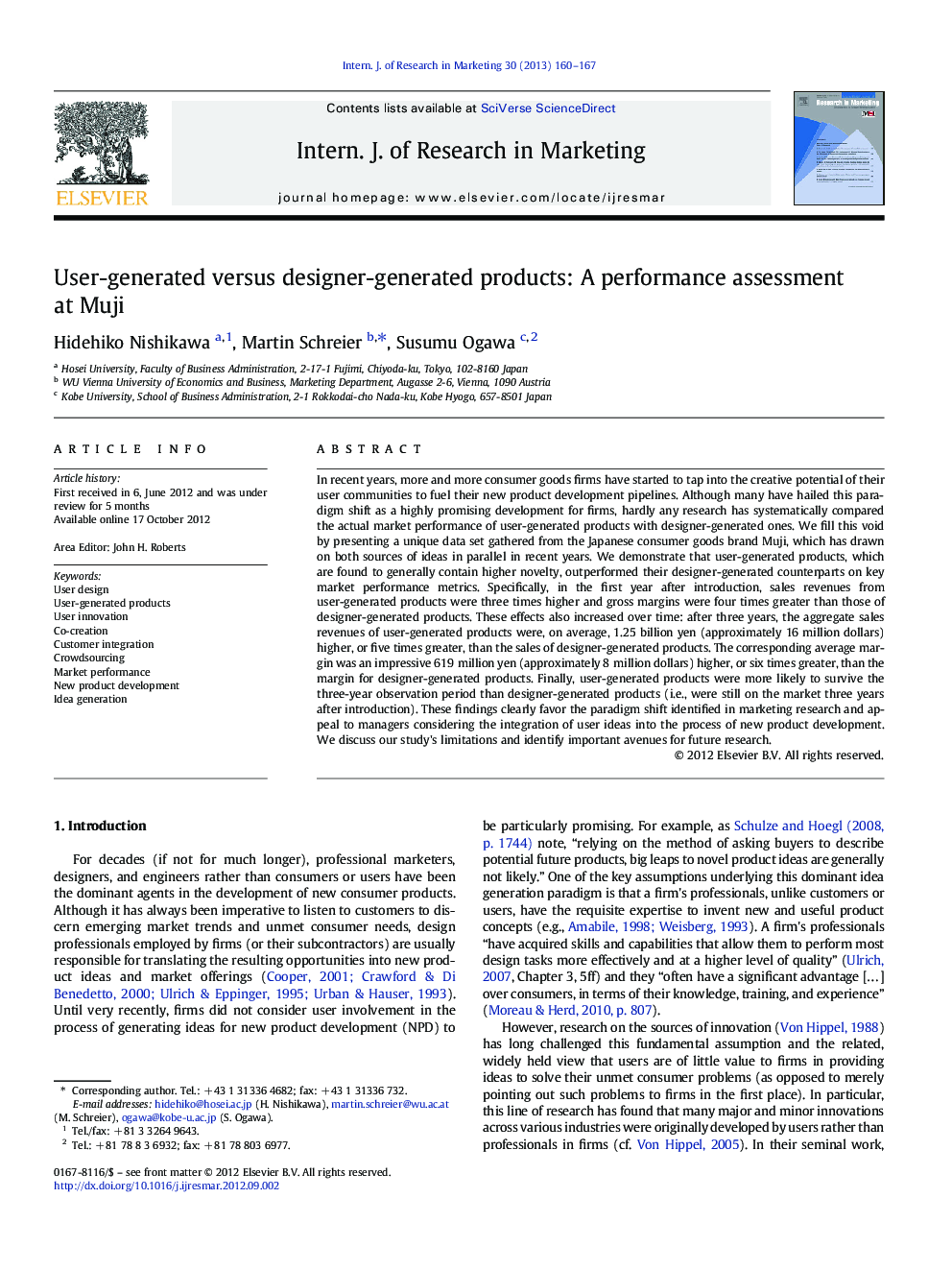| کد مقاله | کد نشریه | سال انتشار | مقاله انگلیسی | نسخه تمام متن |
|---|---|---|---|---|
| 880184 | 1471437 | 2013 | 8 صفحه PDF | دانلود رایگان |

In recent years, more and more consumer goods firms have started to tap into the creative potential of their user communities to fuel their new product development pipelines. Although many have hailed this paradigm shift as a highly promising development for firms, hardly any research has systematically compared the actual market performance of user-generated products with designer-generated ones. We fill this void by presenting a unique data set gathered from the Japanese consumer goods brand Muji, which has drawn on both sources of ideas in parallel in recent years. We demonstrate that user-generated products, which are found to generally contain higher novelty, outperformed their designer-generated counterparts on key market performance metrics. Specifically, in the first year after introduction, sales revenues from user-generated products were three times higher and gross margins were four times greater than those of designer-generated products. These effects also increased over time: after three years, the aggregate sales revenues of user-generated products were, on average, 1.25 billion yen (approximately 16 million dollars) higher, or five times greater, than the sales of designer-generated products. The corresponding average margin was an impressive 619 million yen (approximately 8 million dollars) higher, or six times greater, than the margin for designer-generated products. Finally, user-generated products were more likely to survive the three-year observation period than designer-generated products (i.e., were still on the market three years after introduction). These findings clearly favor the paradigm shift identified in marketing research and appeal to managers considering the integration of user ideas into the process of new product development. We discuss our study's limitations and identify important avenues for future research.
Journal: International Journal of Research in Marketing - Volume 30, Issue 2, June 2013, Pages 160–167